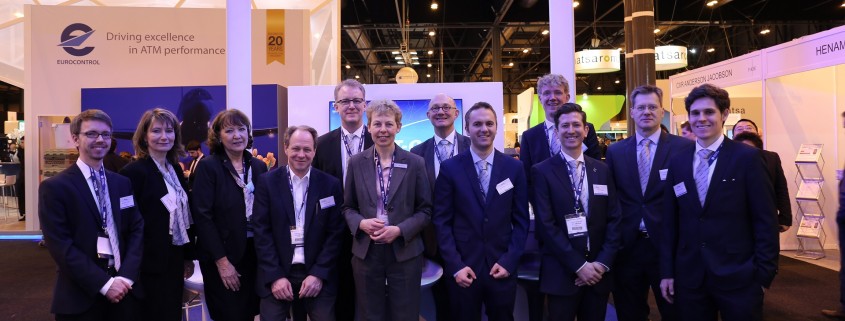In 1999, the European Commission launched the Single European Sky (SES) programme to ensure that national airspaces grow together to create a more unified and efficient pan-European airspace. Together with the Netherlands Aerospace Centre (NLR-Nederlands Lucht- en Ruimtevaartcentrum), the German Aerospace Center (Deutsches Zentrum für Luft- und Raumfahrt; DLR) has become a member of the EU Single European Sky ATM (Air Traffic Management) research programme, known as SESAR 2020. The aim of SESAR 2020 is to develop new systems for the unification of European airspace and meet the challenges of increasing air traffic.
Using airspace more efficiently
Currently, the air traffic management system in Europe transports over 1.6 billion passengers on some 10 million flights every year. It is estimated that the number of flights will increase to 14.4 million by 2035. This represents an enormous challenge for today’s air traffic management, in view of the partial fragmentation of European airspace and the number of parties involved in air transport. New procedures and technologies combined with closer collaboration at the European level offer a solution. They will be able to help with using European airspace more efficiently in the future, to handle the increase in air traffic and the requirements of all parties involved.
DLR and NLR bring key expertise
DLR’s Institute of Flight Guidance and NLR’s Aerospace Operations Division, two of the largest European aerospace research and development centers, do fully recognize the need for international cooperation. Both deliver innovative and independent Air Traffic Management research and implementation support. Through its size and international orientation, large international programs can be executed by AT-One. The extensive knowledge base and experience with projects for a wide variety of customers will ensure best value to their stakeholders.
Ambitious goals
As part of SESAR 2020, various partners from almost every area of aviation are conducting research into application-orientated measures for a secure, low-emission, cost-effective air transport system in Europe. All relevant stakeholders are working together on this — air navigation services, airports, airlines, aircraft manufacturers, air navigation equipment manufacturers and research institutes. In this way, newly developed systems are due to be validated and tested for marketability. SESAR 2020 has a budget of 1.5 billion euro to do this.
The decision for DLR and NLR AT-One Consortium to join SESAR 2020 was announced on 8 March 2016 at the World ATM Congress in Madrid.



